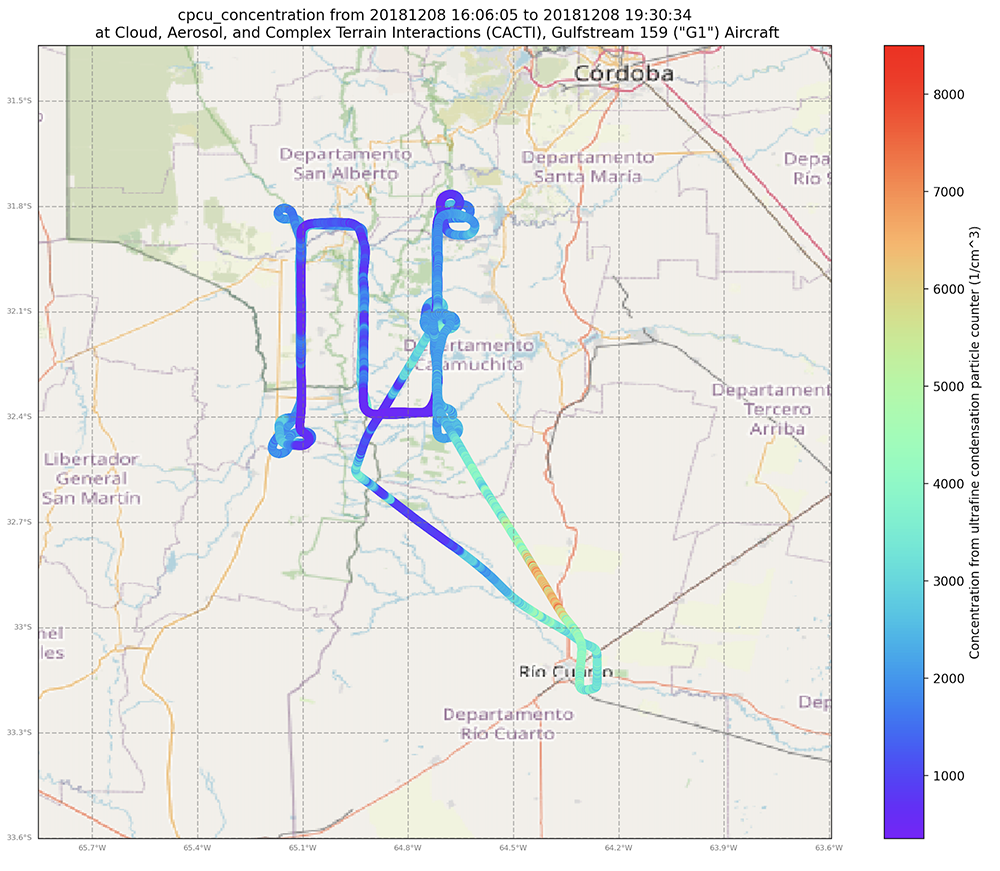New Merged Product Integrates G-1 Flight Data
Published: 26 November 2024

From 2010 until its final science mission in 2018, the Gulfstream-159 (G-1) aircraft served as the Atmospheric Radiation Measurement (ARM) user facility’s main airborne research laboratory. The new ARM Aerial Facility (AAF) Merged value-added product (AAFMERGED VAP) for historical AAF G-1 campaigns has been developed to provide users with a set of frequently used G-1 measurements (e.g., atmospheric parameters, aerosol and trace gas concentrations) in a single netCDF file. This merged product allows users to quickly access the key measurements from nearly two dozen AAF products.
AAFMERGED evaluation data are now available for G-1 flights during the following ARM campaigns and date ranges:
- Holistic Interactions of Shallow Clouds, Aerosols, and Land-Ecosystems (HI-SCALE) around ARM’s Southern Great Plains atmospheric observatory from April 25 through September 22, 2016
- Aerosol and Cloud Experiments in the Eastern North Atlantic (ACE-ENA) in the Azores from June 1, 2017, through February 19, 2018
- Cloud, Aerosol, and Complex Terrain Interactions (CACTI) near Córdoba, Argentina, from November 4 through December 8, 2018.
More information about AAFMERGED is available on the VAP web page.
Scientists can use the new data now. Additional AAFMERGED data from the final six years of G-1 operations (2013 to 2018) will be released for the following campaigns:
- Biomass Burning Observation Project (BBOP), 2013
- Green Ocean Amazon (GoAmazon), 2014
- ARM Cloud Aerosol Precipitation Experiment (ACAPEX), 2015
- ARM Airborne Carbon Measurements (ARM-ACME V), 2015.
Access the available AAFMERGED data in the ARM Data Center. (To download the data, first create an ARM account.)
To share your experience—such as how you use the data and how well they work for you—or to ask a question, contact AAF Science Lead Fan Mei.
To cite the AAFMERGED data, please use doi:10.5439/1999133.
Keep up with the Atmospheric Observer
Updates on ARM news, events, and opportunities delivered to your inbox
ARM User Profile
ARM welcomes users from all institutions and nations. A free ARM user account is needed to access ARM data.


















